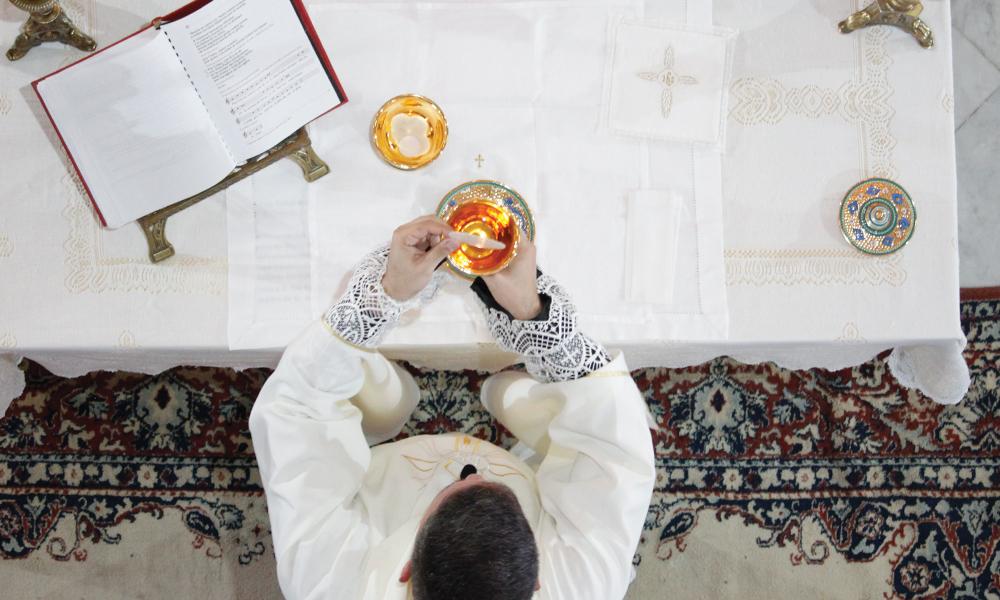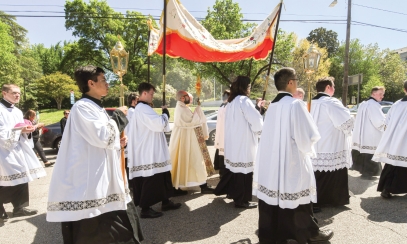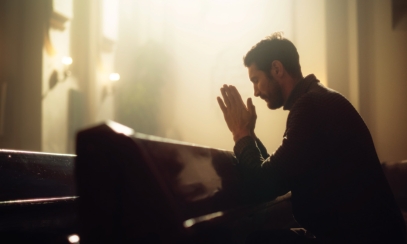
PART I : The Sacrifice of the Eucharist and the Paschal Mystery
‘This is My Body, Given for You’
‘This is My Body, Given for You’
We all know the words from the Gospel of Luke (22:19). We hear them at every Mass. The words we call the “Word of Institution” are found in a few places in Scripture, namely all of the Synoptic Gospels (Matthew, Mark and Luke) and also in Paul’s First Letter to the Corinthians. They represent Christ giving us the Eucharist, establishing it as the hallmark of Christian worship down to our day.
We all know the words from the Gospel of Luke (22:19). We hear them at every Mass. The words we call the “Word of Institution” are found in a few places in Scripture, namely all of the Synoptic Gospels (Matthew, Mark and Luke) and also in Paul’s First Letter to the Corinthians. They represent Christ giving us the Eucharist, establishing it as the hallmark of Christian worship down to our day.
These also are the words of consecration, and there is a reason they are repeated at every Mass.
At the Last Supper, Jesus offers himself as body and blood, connecting his passion and death with this offering. In the Synoptic Gospels, the Last Supper is also the Passover, the ritual sacrificial meal that celebrates God’s freeing of his people Israel from slavery and the subsequent establishment of the covenant at Mount Sinai (Ex 12). Instead of seeing a sacrificed lamb, we see Christ offering and making himself the sacrificial lamb of the new covenant.
Jesus, the new covenant, is the fulfillment of the covenant between God and Israel.
This connection with God’s saving action in Exodus causes us to use this same language to talk about God’s saving action in Christ, the paschal mystery. Our word paschal is derived from the Hebrew פֶסַח, Pesach, meaning passover.
The new passover of the new covenant takes place through the passion, death, resurrection and ascension of Christ, and as such, it takes God’s saving action to a new, eternal level.
This is why we hear Jesus referred to as the lamb or the “Lamb of God” (see Jn 1:29, 36; 1Pt 1:19; Rev 5) in Scripture.
Additionally, the Letter to the Hebrews tells us about the perfect sacrifice of Christ who is both priest and victim, that is, he’s the one offering the sacrifice and the one being sacrificed (see Heb 7).
Sacrifice, even as it is presented in the Old Testament, is not about satisfying a deity who loves bloodshed in the transactional obtaining of favors. It is about the gesture of the gift. Like the unblemished lamb prescribed for Hebrews as the Passover sacrifice, the best of what we have is the Eucharist in offer to the Father.
We should note that the best we have is what our loving Father gave us: the Incarnate Son. In worship, we offer God’s gift back to him, demonstrating that we place ourselves and all he has given at his disposal. The fact that this perfect gift is the gift of God himself makes the sacrifice unique, and it happens “once for all” (Heb 10:10). The eucharistic celebration makes this unique sacrifice, this Paschal Mystery, present to us.
One of the themes we constantly reference when we talk about the Eucharist is the Real Presence of Christ. The sacrificial Words of Institution point us to why this presence is so important. It is a saving presence and a transforming presence. Just as the Passover lamb’s blood helped deliver Israel in Egypt, so too does the precious blood of Christ deliver his people in a new and elevated way. In both, the sacrifice identifies God’s people in a way that saves. In Egypt, God’s people were spared the plague of the death of the firstborn and subsequently delivered from slavery. In the Eucharist, we are united with our savior and receive a foretaste of the intimacy of the eternal communion with God who, through his grace, delivers us from slavery to sin. It is fitting that this sacrifice is presented to us as a meal.
Michael Martocchio, Ph.D., is the secretary of evangelization and the director of the Office of Catechesis and Christian Initiation. Email him at mmartocchio@charlestondiocese.org.



